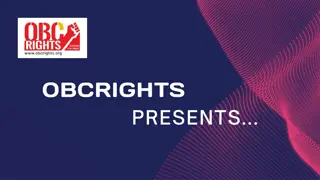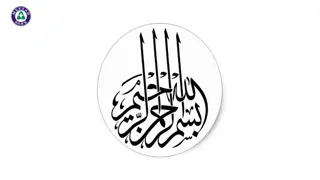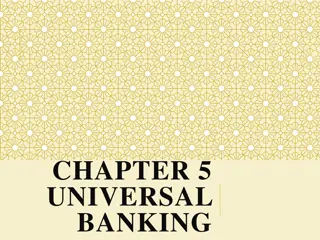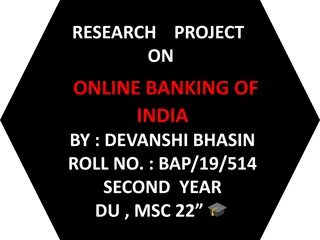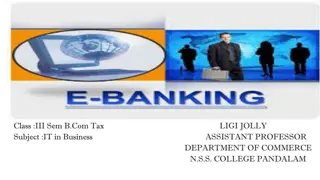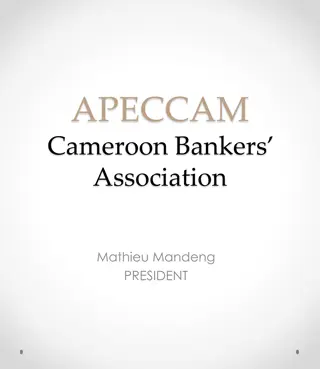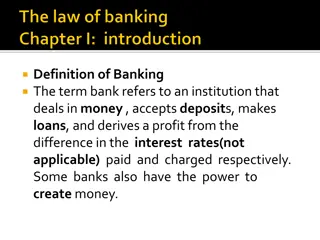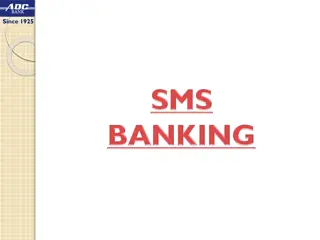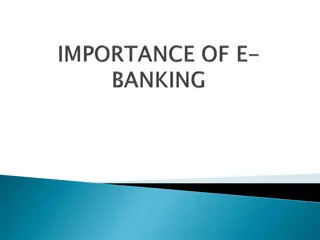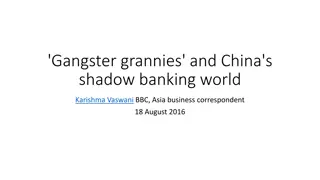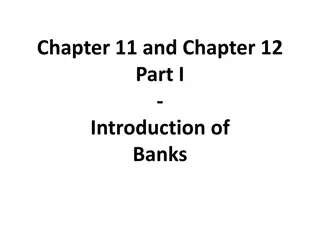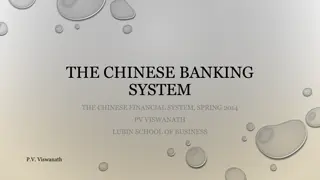Overview of Cheques in Indian Banking System
Learn about different types of cheques in the Indian banking system including bearer cheques, order cheques, crossed cheques, and account payee cheques. Understand the characteristics and usage of each type of cheque to facilitate secure and efficient financial transactions.
Download Presentation

Please find below an Image/Link to download the presentation.
The content on the website is provided AS IS for your information and personal use only. It may not be sold, licensed, or shared on other websites without obtaining consent from the author.If you encounter any issues during the download, it is possible that the publisher has removed the file from their server.
You are allowed to download the files provided on this website for personal or commercial use, subject to the condition that they are used lawfully. All files are the property of their respective owners.
The content on the website is provided AS IS for your information and personal use only. It may not be sold, licensed, or shared on other websites without obtaining consent from the author.
E N D
Presentation Transcript
Dr.P.Ganesh Assistant Professor of Commerce Jamal Mohamed College(Autonomous) Trichy 620 020
Types of cheque in indian Banking system: Cheque: Meaning A cheque is a piece of document/paper which orders the bank to transfer money from the bank account of an individual or an organization to another bank account. The person who writes the cheque is called the drawer and the person in whose name the cheque has been issued is called the payee . The amount of money that needs to be transferred, payee s name, date and signature of the drawer are all mentioned in a cheque. There are certain points to remember regarding cheques which are mentioned below: A cheque can only be issued against a current or savings bank account A cheque without date shall be considered invalid Only the payee, in whose name the cheque has been issued, can encash it A cheque is only valid 3 months from the date it has been issued A 9-digit MICR (Magnetic Ink Character Recognition) code is mentioned at the bottom of the cheque. This makes the clearance of cheques easier for the banks.
Bearer Cheque The bearer cheque is a type of cheque in which the bearer is authorized to get the cheque encashed. This means the person who carries the cheque to the bank has the authority to ask the bank for encashment. This type of cheque can be used for cash withdrawal. This kind of cheque is endorsable. No kind of identification is required for the bearer of the cheque. For example: A cheque has been signed by Arjun (drawer) and the payee for the cheque is Varun. Varun can either go to the bank himself or can send a third person to get encashment for the cheque. No identification shall be required for the bearer s name.
Order Cheque This type of cheque cannot be endorsed, i.e., only the payee, whose name has been mentioned in the cheque is liable to get cash for that amount. The drawer needs to strike the OR BEARER mark as mentioned on the cheque so that the cheque can only be encashed to the payee. For Example: If a cheque has been signed with the name of Varun, then only the payee can visit the bank to get an encashment for the same for a order cheque.
Crossed Cheque In this type of cheque, no cash withdrawal can be done. The amount can only be transferred from the drawer s account to the payee s account. Any third party can visit the bank to submit the cheque. In case of a crossed cheque, the drawer must draw two lines at the left top corner of the cheque.
Account Payee Cheque This is the same as the account payee cheque but no third party involvement is required. The amount shall be transferred directly to the payee s account number. To ensure that it is an account payee cheque, two lines are made on the left top corner of the cheque, labelling it for A/C PAYEE .
Stale Cheque In India, any cheque is valid only until 3 months from the date of issue. So if a payee moves to the bank to get withdrawal for a cheque which was signed 3 months ago, the cheque shall be declared a stale cheque. For example: If a cheque is dated January 1, 2021, and the payee visits the bank for withdrawal on May 1, 2021, his/her request shall be denied and the cheque is declared stale.
Post Dated Cheque If a drawer wants the payee to apply for withdrawal or transfer of money after the present date, then he/she can fill a post dated cheque. For example: If the date on which the drawer is filling the cheque is May 10, 2021, but he wants the payment to be done later, he/she can fill the cheque dates as May 30, 2021. It shall be called a post-dated cheque.
Ante Dated Cheque If the drawer mentions a date prior to the current date on the cheque, it is called ante dated cheque. For example: If the current date is January 30, 2021, and the drawer dates the cheque as January 1, 2021. It shall be considered as an ante-dated cheque. Self Cheque If the drawer wishes cash for himself he can issue a cheque where in place of the Payee s name he can write SELF and get encashment from the branch where he owns an account. For example: If a person wants Rs.1,00,000/- in cash, he can issue a self cheque and visit his bank branch where he owns an account and get encashment in place of a cheque.
Mutilated Cheque If a cheque reaches the bank in a torn condition, it is called a mutilated cheque. If the cheque is torn into two or more pieces and the relevant information is torn, the bank shall reject the cheque and declare it invalid, until the drawer confirms its validation. If the cheque is torn from the corners and all the important data on the cheque is intact, then the bank may process the cheque further.
Travellers Cheque As the name suggests, the Traveler s cheque can be used when a person is travelling abroad where the Indian currency is not used. If a person is travelling abroad, he can carry the traveller s cheque and get encashment for the same in abroad countries. Blank Cheque When a cheque only has a drawer s signature and all the other fields are left empty, then such a type of a cheque is called a blank cheque.





